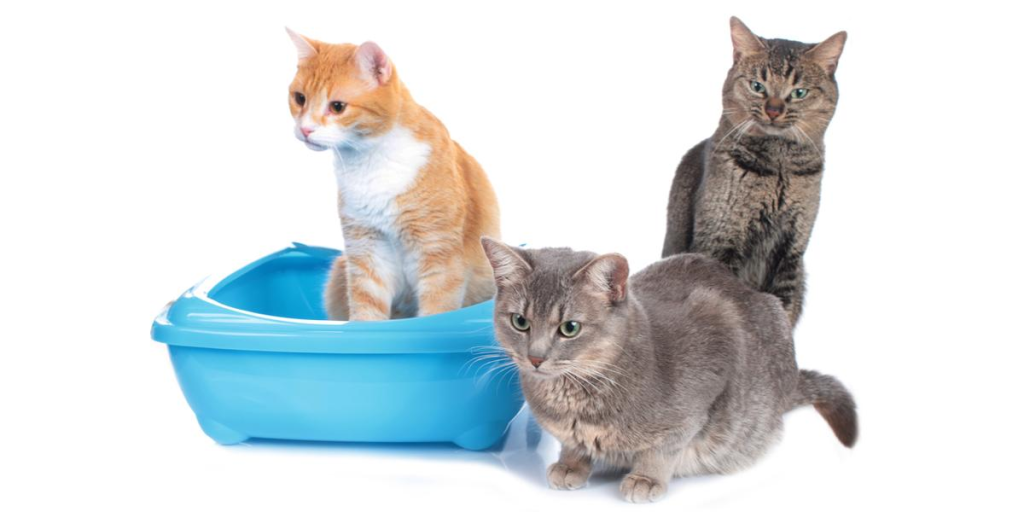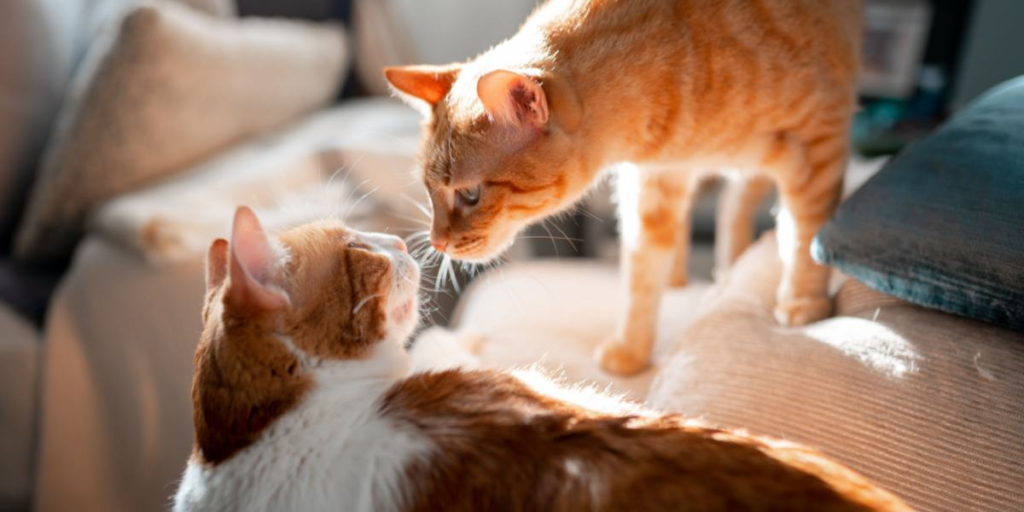If you like owning cats, you already know the benefits of sharing your life with them. There is nothing better than spending an evening watching TV with a cat curled up in your lap. Cats reduce loneliness and stress by sharing intimate caresses and cuddles.
With all these benefits, one feline family member must be more than enough. But what if you were to ask a cat if they would like a new companion? What do you think they would answer?
Do you want a pair of cats?

Just as some people enjoy being alone, cats are often happier being alone in the house. Of course, there are cats that are paired, and these can be same-breeds that are always together, or cats that have bonded over time.
Such cats who are familiar with each other are best kept apart. In general, however, cats do better living alone than in a multi-cat household.
How to tell if your cat wants another cat

Not all cats will get along, but some will become best friends.
If you already have one cat, getting another cat is not always a good idea. However, if you are considering adding a cat to your household, consider the following points to determine if it is feasible. However, it takes time for cats to get used to each other, so do not worry if your cats do not show interest in the newcomer at first!
1. they are used to having cat friends
Before you decide when to welcome your furry new family member into your home, it is a good idea to watch their behavior.
If you have a pair of companion cats and one of them has passed away, you may want to consider re-homing a new cat to keep them company. However, you must understand that cats need a period of adjustment after losing a friend.
Therefore, you should watch your new tortoiseshell cat’s behavior carefully before deciding when to welcome it into your home.
2. still young

Fortunately, there are several methods you can use to encourage your cat to sleep on a schedule that is good for both you and your cat.
Cats are creatures of habit, and older cats tend to stick to their ways! Therefore, if you are getting a new cat, it is best to do so when the older cat is still young and adaptable. The new cat is unlikely to stress your cat and may get along with it over time.
3. have a cat friend in the neighborhood.

Kittens grow rapidly, are rambunctious, and have very high energy requirements.
If your cat is friendly with other cats, it may be more likely to accept a new family member. Therefore, if your cat often sits or sunbathes near other cats in the yard and seems relaxed by their presence, this may be a positive sign. However, just because your cat enjoys the company of other cats does not necessarily mean that he or she will want to share his or her territory with other cats!
4. laid-back.

Even the most laid-back cat may not welcome the arrival of a new brother or sister.
Every cat is different. Some cats are shy, others are outgoing. Some cats are easily stressed, others are laid-back. If your cat is laid-back, he or she will be more likely to accept a new furry roommate. However, even the most laid-back cat may not welcome a new sibling, so be prepared to wait patiently.
5. Spends a lot of time alone.

Cats kept indoors may enjoy being together.
If a cat spends a lot of time alone, it may enjoy being with you, especially if it is confined indoors. However, don’t expect it to thank you right away. It may take time for the cat to accept the idea!
6. Plenty of space inside and outside the house.

Having too many cats in a small space can cause bullying and stress.
Cats are small, right? They don’t take up much space, so you might think you can keep hundreds of them! But to live with other cats, they need enough space without stress. Giving them enough space to be alone when they need it will help them develop friendships with their new furry brothers and sisters.
Having too many cats in a small space can lead to bullying and stress, so always make sure you have enough space before adopting a cat.
7. There is a mating cat.

You should consider whether you have the space and financial means to keep another cat.
If the cat is paired with a sibling or another cat, do not separate them. If you take in a cat without a good friend, the cat may become lonely and show signs of stress, such as urinating or defecating outside the litter tray or shedding hair. If this is the case, you will need to consider whether you have the space and ability to keep another cat.
If it is not possible to keep two cats, you may want to consider returning your cat and becoming a foster parent for a cat that is not closely related to the other cat.
8. Accustomed to keeping many cats.

Cats are loners by nature, so if they are used to living in a group, they will become accustomed to that environment.
If you already have several cats and the cat you are taking in has lived with other cats, the adoption process will go smoothly. Cats are naturally solitary animals, but if they are accustomed to living in a group, they will enjoy group living.
9. No medical problems

In adopting a new cat, you need to consider the financial burden.
Remember that no matter how hard you try, most cats will be nervous at first about the presence of a new cat. Thus, if your cat is in poor health, has a long-term illness, or suffers from chronic pain, you may need to consider whether the stress associated with a new cat will benefit your cat.
This is especially true if your current cat has been making regular trips to the vet and you are feeling the strain.
10. vaccinate and neuter!

If you are getting a new cat, you should have both cats vaccinated to protect them from serious diseases. Image.
Welcoming a new cat into your home is exciting. If handled properly, cats can get along well. However, the last thing you want to do is jeopardize the health and well-being of your older cat.
Therefore, if you are welcoming a new cat, you should make sure that both cats are vaccinated against serious diseases. Likewise, you should also make sure that both cats are neutered if you don’t want to hear them “purring” on their little paws!
Choosing a second cat

When bringing a new cat home, consider the personality and preferences of your current cat.
If you decide to get a second cat, you will need to consider the following to choose the perfect feline companion
Age.

There is no strict rule as to what age you should choose for your second cat, but there are a few things to consider. First, if the older cat is younger, it may enjoy the mischievous nature of the kitten and other young feline companions.
On the other hand, an older cat seeking peace and quiet may not like the chaos of kittens or rowdy young cats! Your old cat may feel more comfortable in the company of other old cats, but may still not like their routines to be disrupted.
Gender.

A cliché, but should your second cat be the same gender as your current cat, or vice versa? Unfortunately, there is no guarantee that your cat will get along well with another cat, regardless of gender. However, spaying or neutering does seem to help.
History

When considering bringing a cat into your home, always consider the cat’s history. You should find out if it has had any health problems or major trauma, and find out about its vaccination and spay/neuter status. This will help ensure that you get the care you need without any unpleasant surprises.
Advice for adopting a second cat

Even with careful cat introductions, it is normal for cats to take some time to become accustomed to each other.
When you welcome a new cat into your home, there are a few things you can do to help it adjust to its new surroundings as smoothly as possible.
Preparation

Prepare enough litter trays, food bowls, and water fountains to keep the cats fed and watered. Cats do not like competition, so a good rule of thumb is to have one litter tray per cat, plus one more. Provide separate food bowls for each cat and plenty of water fountains and drinking fountains throughout the house to prevent bullying and make your cat feel more at home.
Before welcoming your furry new companion home, you may want to prepare a cat calming spray or diffuser, such as Feliway or Pet Remedy, to help lower your cat’s stress level and help him or her through the transition period calmly.
Introduce your new cat to your current cat.

Welcome the cat to the new cat by providing towels, blankets, and other items with the other cat’s scent on them. This will allow the cat to become accustomed to the other cat’s scent over the course of a week or two.
When introducing the new cat to your cat, start by allowing them to see each other from a distance but not touch each other. You can use a cage or baby gate. Play with the cats and give them treats to keep both cats happy.
Treats also work as positive reinforcement, so you can use treats as rewards for positive behavior, such as showing interest in the other cat. Once both cats are familiar with each other, you may allow them to touch each other for short periods of time, but be sure to keep an eye on them so they do not become nervous or overwhelmed.
What if things “don’t go your way”?

It is not unusual for cats to hiss, growl, or fight with each other when they first meet. It usually takes 3-4 weeks or more for their relationship to improve. However, if you are not satisfied after a month or two, it is worth consulting a veterinarian or qualified behaviorist for advice.
Conclusion

Who wouldn’t want to get another cat? With two cats, you get twice the purring, twice the fun, and twice the love! But before you start looking for the perfect cat friend for your cat, you need to consider how it will affect your cat. After all, cats are usually solitary creatures, so your cat may not appreciate a new companion as much as you would like. If you decide to welcome another cat into your home, plan carefully and help both cats adjust to their new lives.

